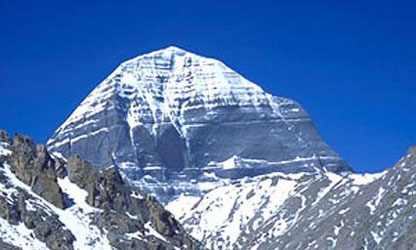
Asia’s most sacred mountain stands in a remote corner of Western Tibet. Its name is Mount Kailas, its reputation legendary. To pilgrims of four religions—Buddhist, Hindu, Jain, and Bön—this 22,028-foot rock pyramid is the throne of the gods and the “Navel of the Earth,” a place where the divine takes earthly form. Kailas and its counterpart, the equally sacred Lake Manasarovar, rises in the midst of a sublime natural landscape of stark windswept plains, luminous sky, and immense snowcovered peaks. Virtually every step of the sacred routes encircling Kailas and Lake Manasarover has its own legend, every rock, hill and spring its own god: an outpouring of myth and belief which confirms by its very abundance the presence of the sacred.
Kailas was first opened to foreign travelers in the 1980s. Now the government is keying into Chinese efforts to develop tourism infrastructure throughout Tibet, with a scheme to construct a road around the sacred mountain. Ironically, tour operators and trek leaders fear the proposed road would seriously undermine the region’s appeal to foreign travelers.
Local Tibetans are deeply disturbed by road construction plans, as it is profoundly disrespectful to their cultural and religious beliefs. Kailas rises over an exceptionally remote and unspoiled portion of Western Tibet. Constructing a motor road around the mountain undermines the whole principle of pilgrimage and the religious merit gained by walking kora, or circumambulation.
What needs to be done? Permanent protection for the region can be gained by having Kailas and Manasarovar designated as a UNESCO World Heritage Site. As a “site of outstanding universal value,” Kailas would be protected from intrusive changes and cultural destruction. It is up to the Chinese government to request this nomination.
Read Ethical Traveler's Reprint Policy.
